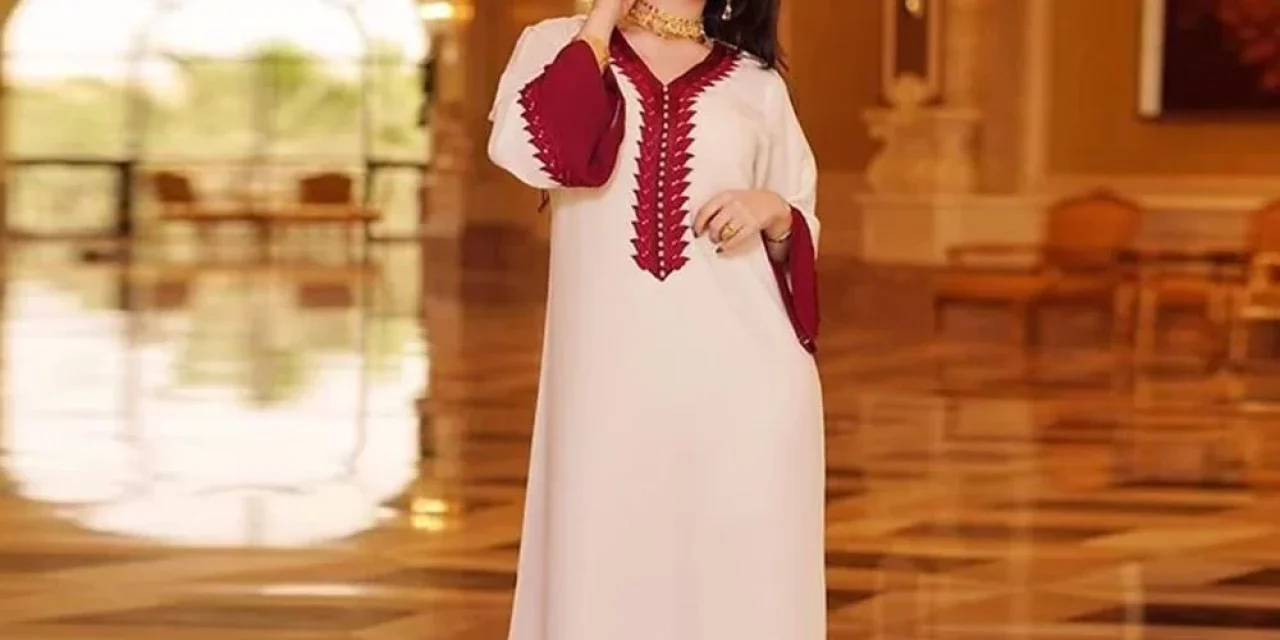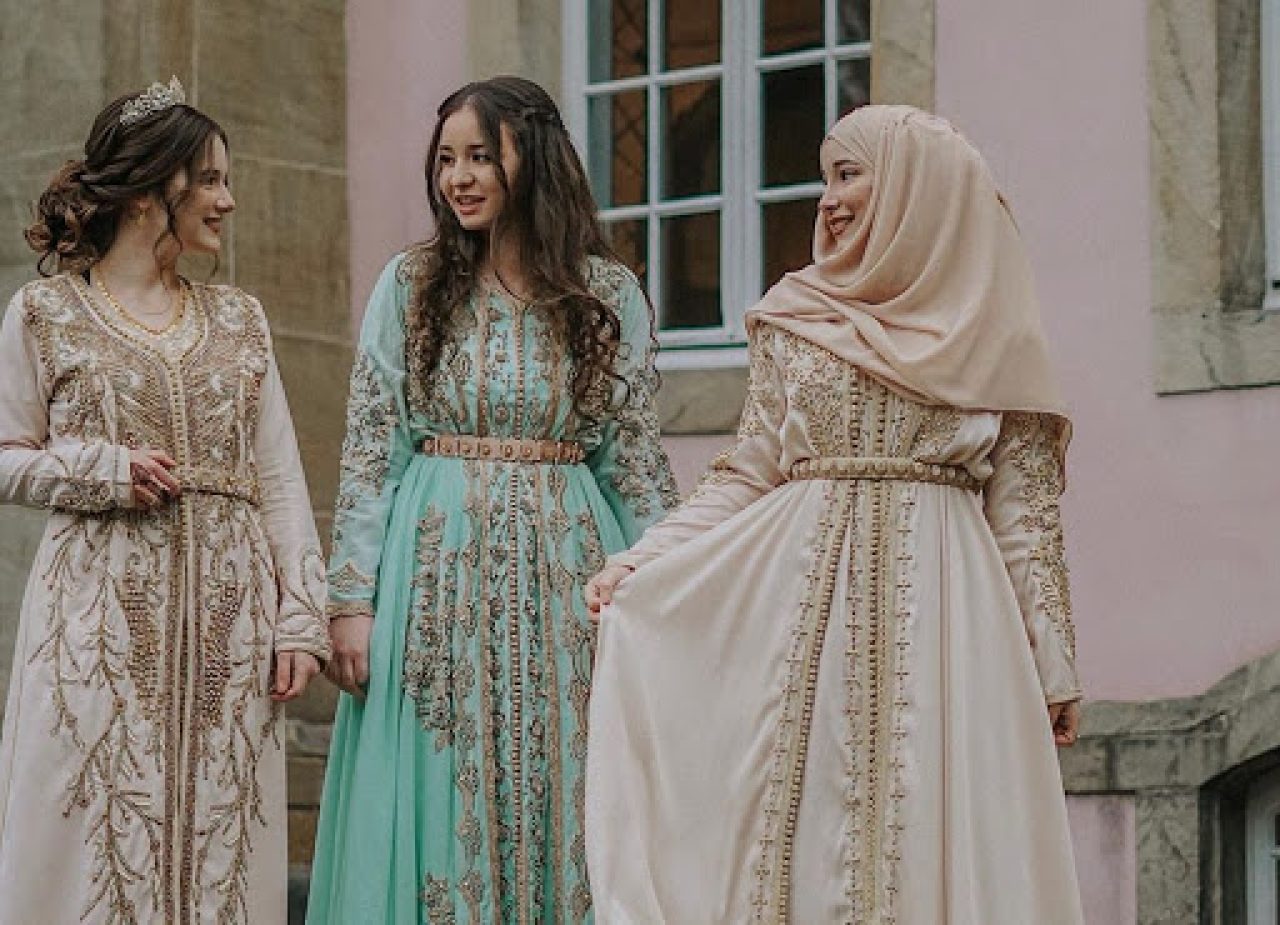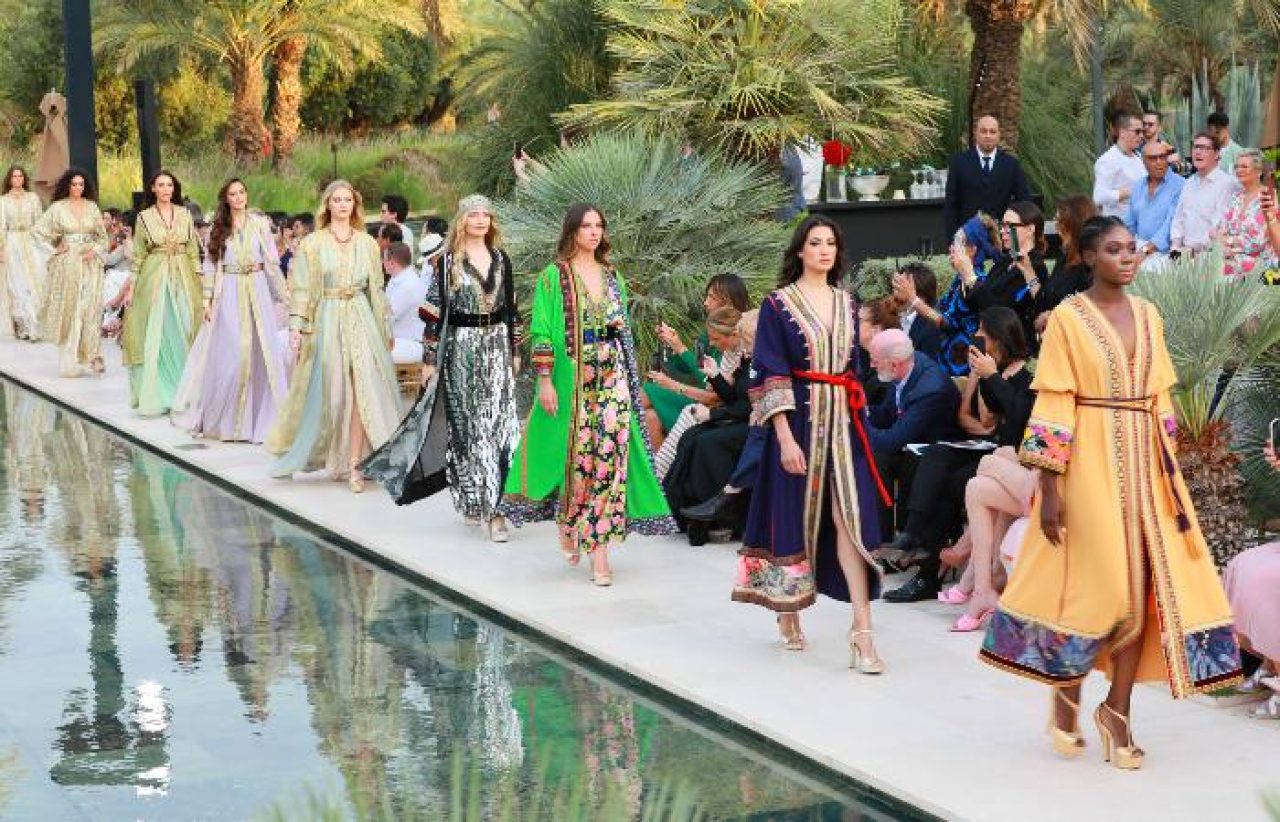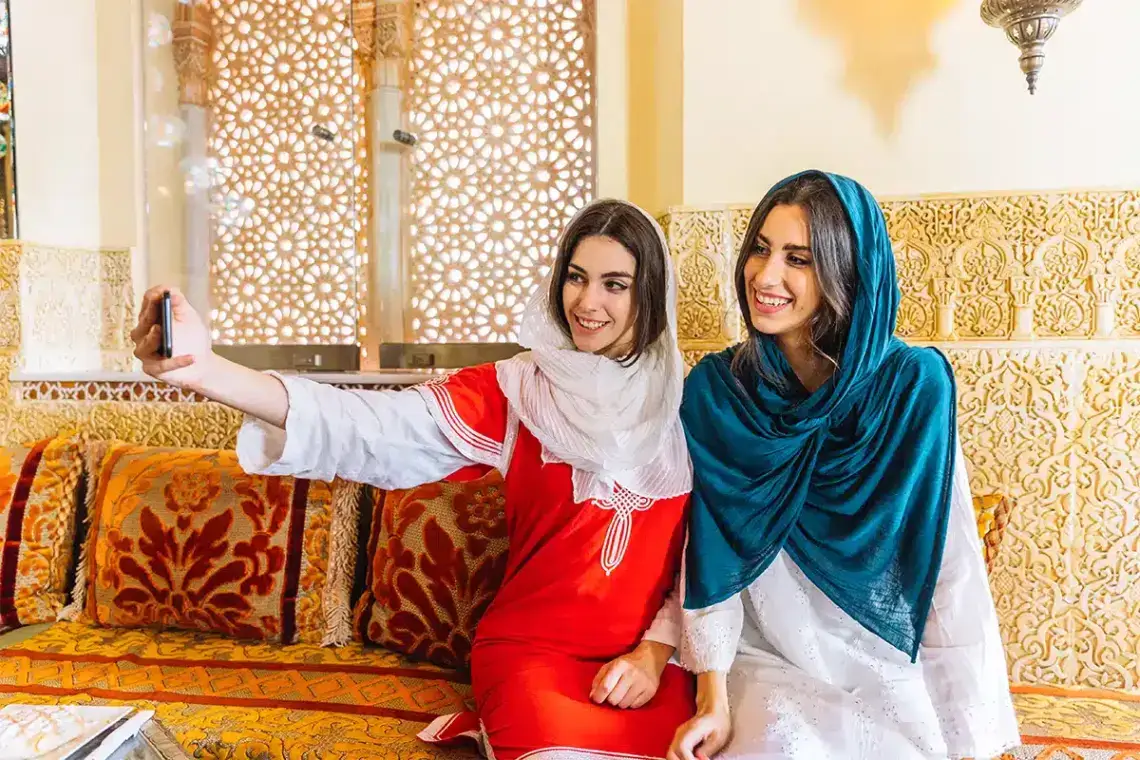Moroccan fashion and textiles showcase a vibrant tapestry woven from the rich history, diverse cultures, and artistic traditions of the country. With influences from Berber, Arab, and French cultures, Moroccan fashion features unique designs and craftsmanship that have evolved while preserving deep-rooted traditions. This post explores the fascinating world of Moroccan fashion, the significance of its textiles, and how contemporary trends reshape this ancient art form.
The Rich Heritage of Moroccan Fashion
Moroccan fashion is steeped in history, with each garment telling a story of its cultural origins. Traditional Moroccan clothing features vibrant colors, intricate patterns, and luxurious fabrics. One iconic garment is the djellaba, a long, loose-fitting robe with a hood worn by both men and women. Artisans often make the djellaba from wool or cotton. You can find it in various colors, each signifying different occasions or regions. For example, people prefer lighter colors during the summer months, while darker hues dominate in winter.

Another staple of Moroccan fashion is the kaftan, a flowing dress adorned with beautiful embroidery and embellishments. Originally worn by royalty, kaftans have become popular among women for special occasions such as weddings and celebrations. The kaftan exemplifies the artistry of Moroccan textiles. It features intricate beadwork, sequins, and traditional motifs that reflect the country’s cultural heritage.
The Role of Textiles in Moroccan Culture
Textiles play a crucial role in Moroccan culture. They not only serve as clothing but also reflect identity, status, and artistry. Weaving textiles represents an ancient practice, with each region of Morocco showcasing unique techniques and styles. For instance, Berber tribes are renowned for their handwoven rugs. These rugs often feature geometric patterns and bright colors. More than mere decorative items, these rugs hold cultural significance and often pass down through generations.

Moroccan textiles also include a variety of fabrics used in clothing and home decor. Silk, cotton, and wool are commonly used. Artisans prize silk for its softness and sheen. Traditional dyeing techniques, such as using natural plant dyes, result in rich, vibrant colors that enhance the beauty of the fabrics.
Traditional Techniques and Craftsmanship
The craftsmanship behind Moroccan textiles showcases the skill and dedication of artisans. Many traditional techniques have passed down through generations, ensuring the art form remains alive and relevant.
- Weaving stands as one of the most significant methods in Moroccan textile production. Artisans often use handlooms to create intricate patterns and textures, reflecting the rich cultural heritage of their regions. This meticulous process requires patience and skill. Weavers spend days or weeks on a single piece.
- Embroidery adds another essential aspect to Moroccan textiles. It enhances the artistry of garments. Traditional embroidery techniques vary by region, with each style telling its own story. Artisans use gold and silver threads, beads, and sequins to elevate the craftsmanship, making embroidered garments truly unique.
- Leatherwork plays a significant role in Moroccan fashion, particularly in the creation of babouches. These traditional slip-on shoes, made from soft leather, often feature bright colors and intricate decorations. Artisans craft babouches for both men and women, making them a popular choice for casual and formal occasions.
Contemporary Trends in Moroccan Fashion
While traditional Moroccan fashion remains an essential part of the culture, contemporary trends reshape the fashion landscape. Modern designers blend traditional elements with innovative designs, creating a fusion of styles that appeals to local and international audiences.
One notable trend involves incorporating sustainable practices in fashion production. Many Moroccan designers focus on using organic materials and environmentally friendly production methods. This shift towards sustainability resonates with consumers who become increasingly aware of the impact of fast fashion on the environment.
The rise of modest fashion has led to a growing demand for contemporary Moroccan clothing that reflects modern aesthetics while adhering to cultural values. Designers create stylish yet modest pieces that cater to a diverse clientele. This showcases the versatility of Moroccan textiles.
Social media influences Moroccan fashion by promoting it to a global audience. Platforms like Instagram and Pinterest allow designers to showcase their work, connect with fashion enthusiasts, and reach potential customers worldwide. This increased visibility has led to collaborations between Moroccan designers and international brands, further elevating the profile of Moroccan fashion.
Fashion Events and Influences
Fashion events in Morocco, such as Marrakech Fashion Week, highlight the country’s thriving fashion scene. These events provide platforms for emerging designers to showcase their work and celebrate the rich heritage of Moroccan textiles. They foster collaboration between local and international fashion communities, promoting cultural exchange and innovation.

International fashion trends often draw inspiration from Moroccan fashion. Designers worldwide take cues from the intricate patterns, vibrant colors, and artisanal craftsmanship that characterize Moroccan textiles. This cross-cultural exchange enriches the global fashion landscape and showcases the beauty of Moroccan artistry.
Conclusion
Moroccan fashion and textiles embody a captivating blend of tradition and modernity. As the world becomes increasingly interconnected, Moroccan designers find new ways to honor their heritage while embracing contemporary trends. From the intricate weavings of Berber rugs to the elegant drape of a kaftan, each piece tells a story that reflects the richness of Moroccan culture.
Whether you explore the bustling souks of Marrakech or admire the craftsmanship of a handmade rug, the allure of Moroccan fashion and textiles is undeniable. By supporting local artisans and embracing sustainable practices, we can help preserve this vibrant art form for future generations. As Moroccan fashion continues to evolve, it stands as a testament to the creativity and resilience of a culture that cherishes its traditions while embracing the future.



0 Comment